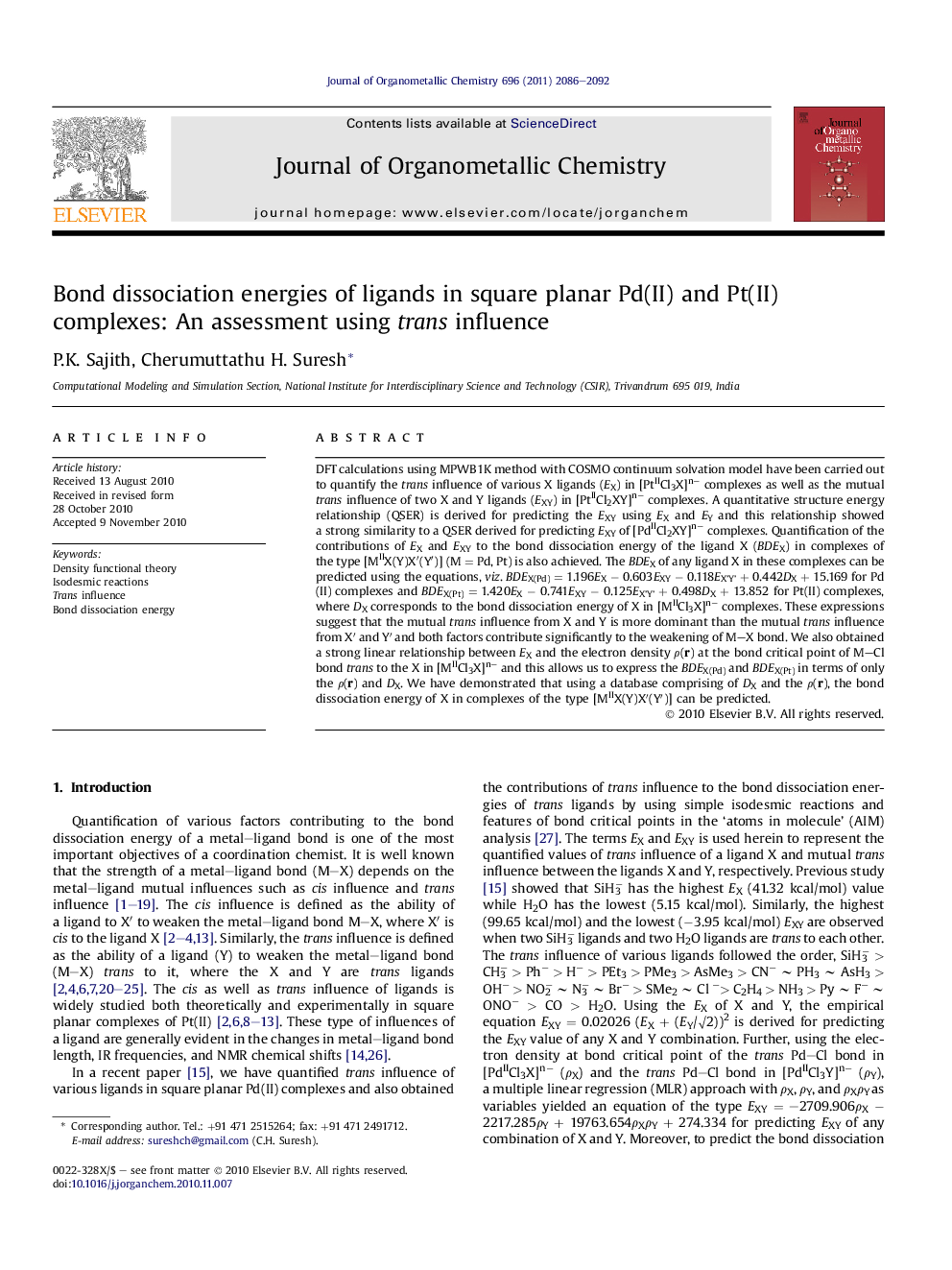| کد مقاله | کد نشریه | سال انتشار | مقاله انگلیسی | نسخه تمام متن |
|---|---|---|---|---|
| 1326637 | 977439 | 2011 | 7 صفحه PDF | دانلود رایگان |

DFT calculations using MPWB1K method with COSMO continuum solvation model have been carried out to quantify the trans influence of various X ligands (EX) in [PtIICl3X]n− complexes as well as the mutual trans influence of two X and Y ligands (EXY) in [PtIICl2XY]n− complexes. A quantitative structure energy relationship (QSER) is derived for predicting the EXY using EX and EY and this relationship showed a strong similarity to a QSER derived for predicting EXY of [PdIICl2XY]n− complexes. Quantification of the contributions of EX and EXY to the bond dissociation energy of the ligand X (BDEX) in complexes of the type [MIIX(Y)X′(Y′)] (M = Pd, Pt) is also achieved. The BDEX of any ligand X in these complexes can be predicted using the equations, viz. BDEX(Pd) = 1.196EX − 0.603EXY − 0.118EX’Y’ + 0.442DX + 15.169 for Pd(II) complexes and BDEX(Pt) = 1.420EX − 0.741EXY − 0.125EX’Y’ + 0.498DX + 13.852 for Pt(II) complexes, where DX corresponds to the bond dissociation energy of X in [MIICl3X]n− complexes. These expressions suggest that the mutual trans influence from X and Y is more dominant than the mutual trans influence from X′ and Y′ and both factors contribute significantly to the weakening of M–X bond. We also obtained a strong linear relationship between EX and the electron density ρ(r) at the bond critical point of M–Cl bond trans to the X in [MIICl3X]n− and this allows us to express the BDEX(Pd) and BDEX(Pt) in terms of only the ρ(r) and DX. We have demonstrated that using a database comprising of DX and the ρ(r), the bond dissociation energy of X in complexes of the type [MIIX(Y)X′(Y′)] can be predicted.
The bond dissociation energy (BDE) of a ligand in complexes of the type [MIIX(Y)X′(Y′)] (M = Pd, Pt) can be analyzed and predicted in terms of trans influence parameters, obtained using simple isodesmic reactions and features of bond critical points in the atoms in molecule (AIM) analysis. Figure optionsDownload as PowerPoint slideHighlights
► Trans influence of various ligands in square planar Pt(II) complexes are quantified.
► A quantitative structure energy relationship is derived for predicting the mutual trans of ligands in Pt(II) complexes.
► Bond dissociation energy of various ligands in square planar Pd(II) and Pt(II) complexes are expressed in terms of trans influence parameters.
Journal: Journal of Organometallic Chemistry - Volume 696, Issue 10, 15 May 2011, Pages 2086–2092